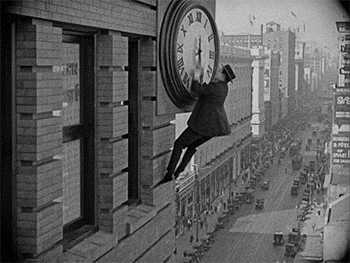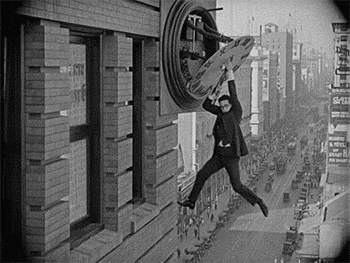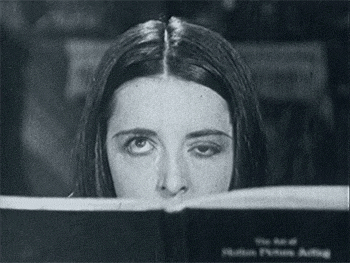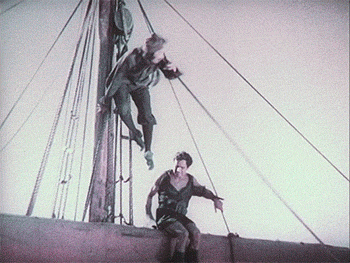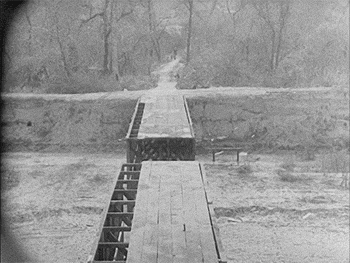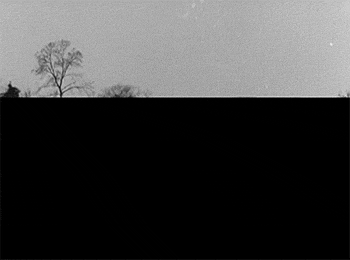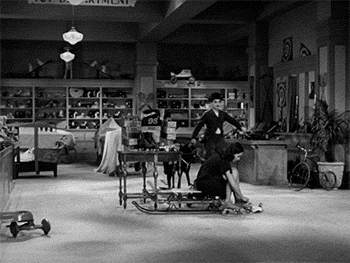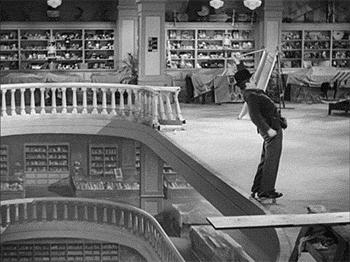Harold Lloyd hanging off a clock in Safety Last! (1923)
Since green screens and fake backgrounds were essentially unachievable, Safety Last used perspective to its advantage. The set was built at the right height for Lloyd’s climb, but on the roof of a building across the street. As Lloyd climbed higher, the set was moved to taller buildings.
Colleen Moore’s eye trick in Ella Cinders (1926)
This creepy effect was achieved by filming two halves of the actresses face separately. A piece of glass that was painted half black was placed in front of her face, they’d film, then wind the film back and shoot the other half.
Douglas Fairbanks slides down sail in The Black Pirate (1926)
Fairbanks’ brother, an engineer, designed this stunt. The sail and the camera were placed at an angle, and Fairbanks’ knife was connected to a hidden pulley and counterweight. The billowing effect on the sails was pulled off by using propellers.
Buster Keaton rides over a broken bridge in Sherlock Jr. (1924)
This effect was achieved by blacking the bottom of the frame out, lining it up with the bridge and then having Buster ride over the bridge while it was still intact. The footage of the trucks was filmed separately with part of the bridge removed.
Charlie Chaplin roller-skating in a department store in Modern Times (1936)
A unique movie technique used was glass matte paintings. Part of the background was painted on a piece of glass, which was placed in front of the camera.

